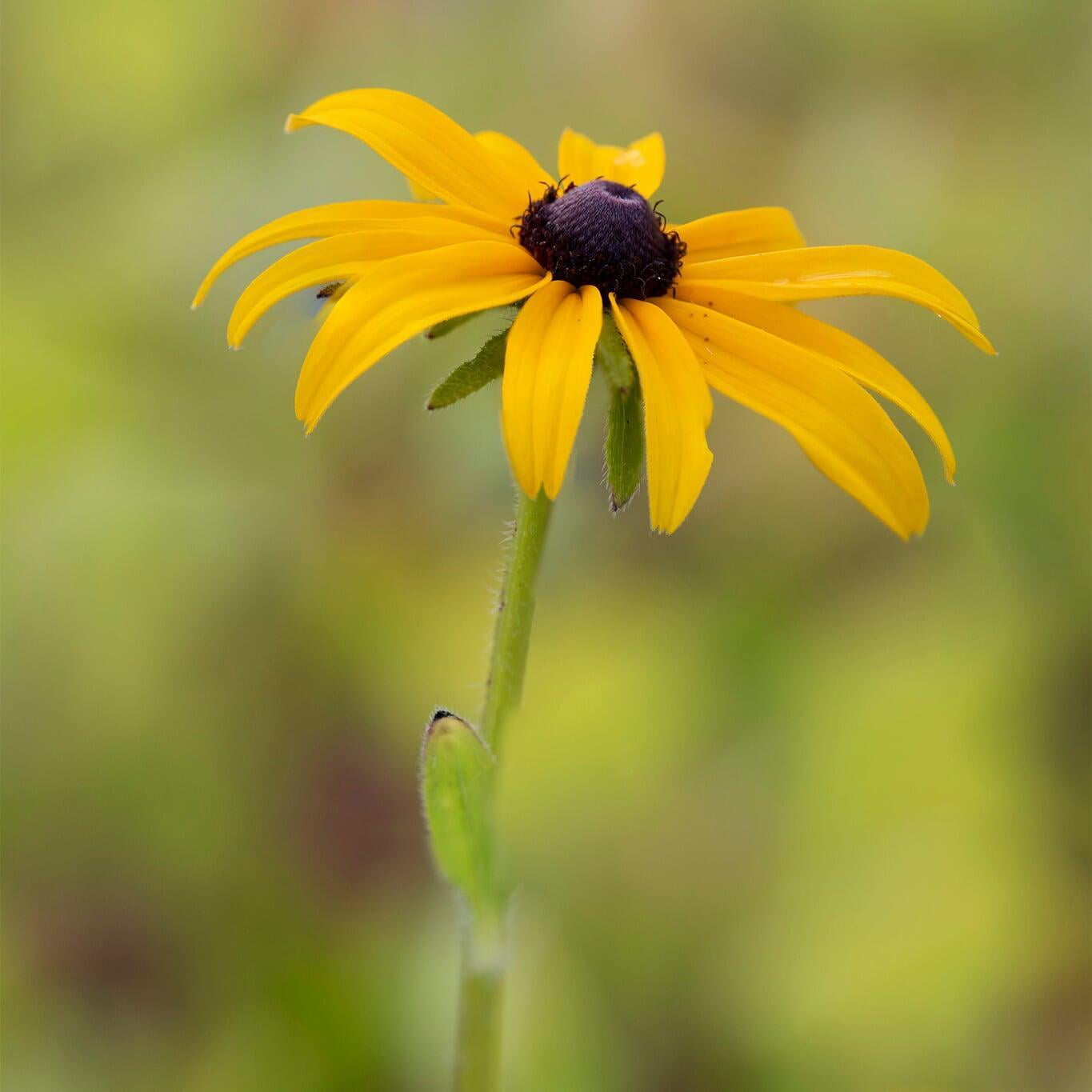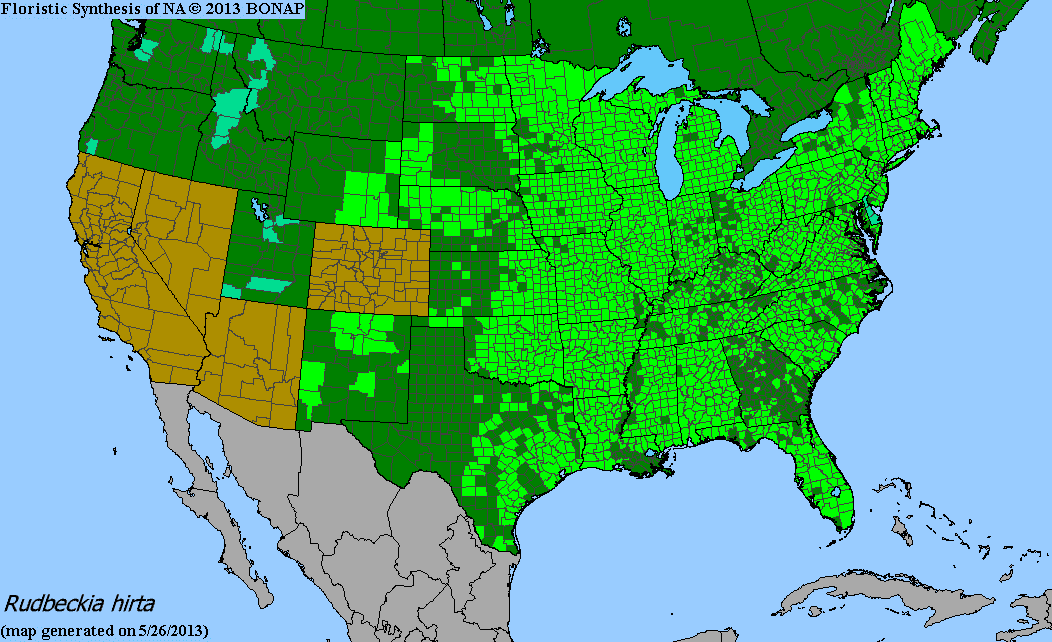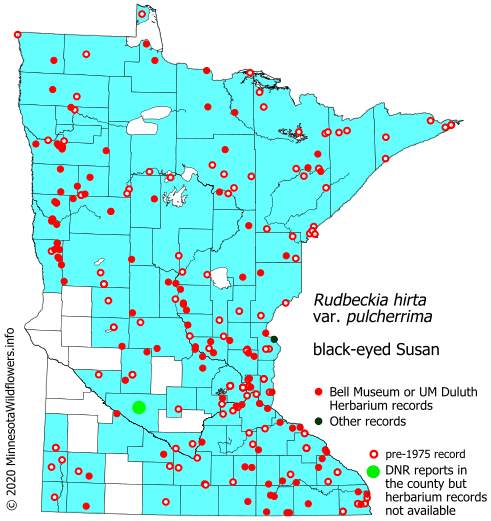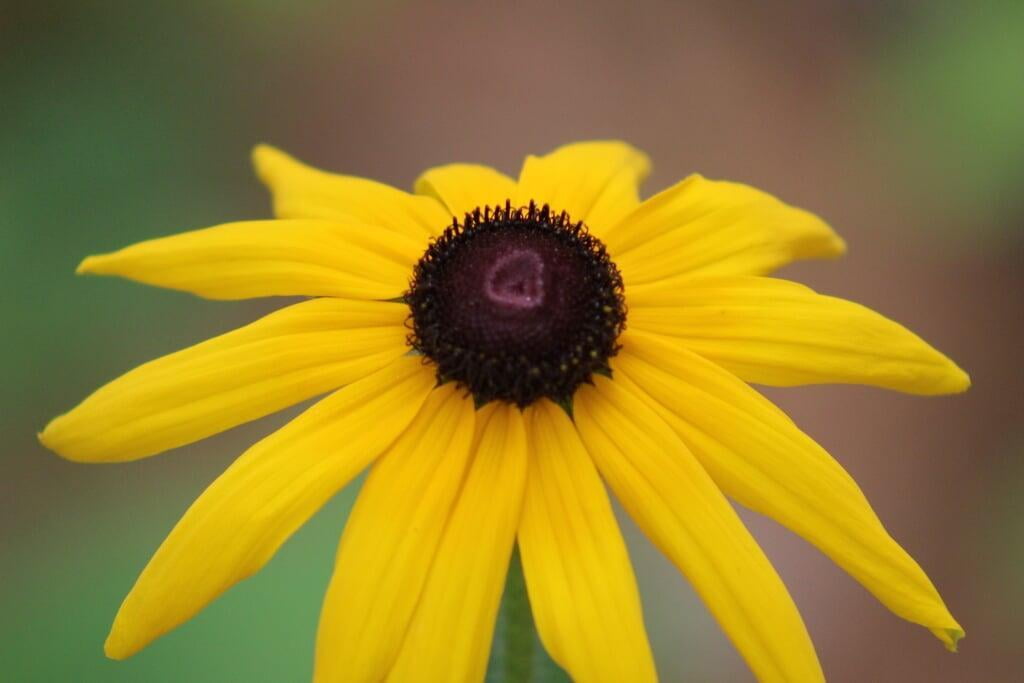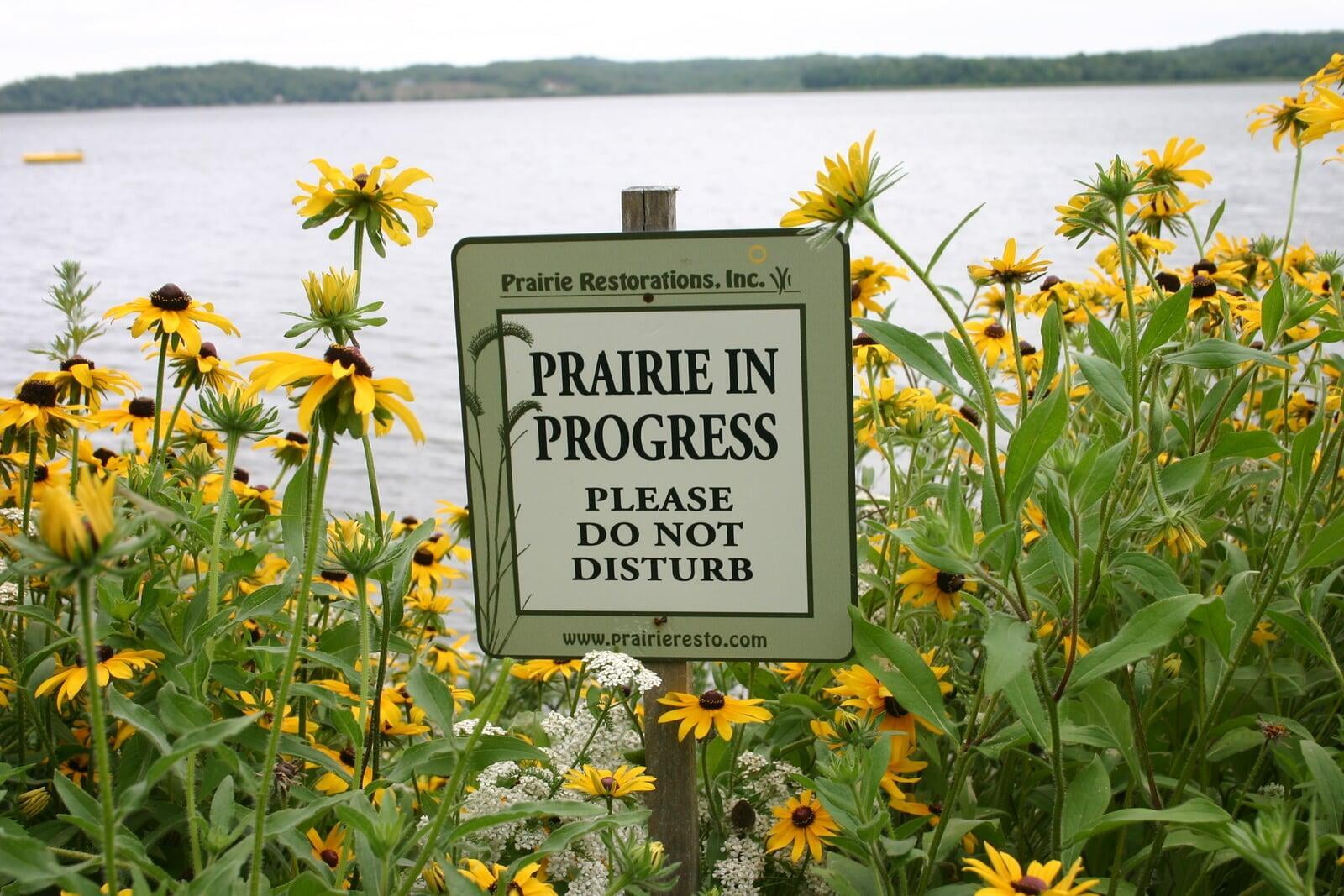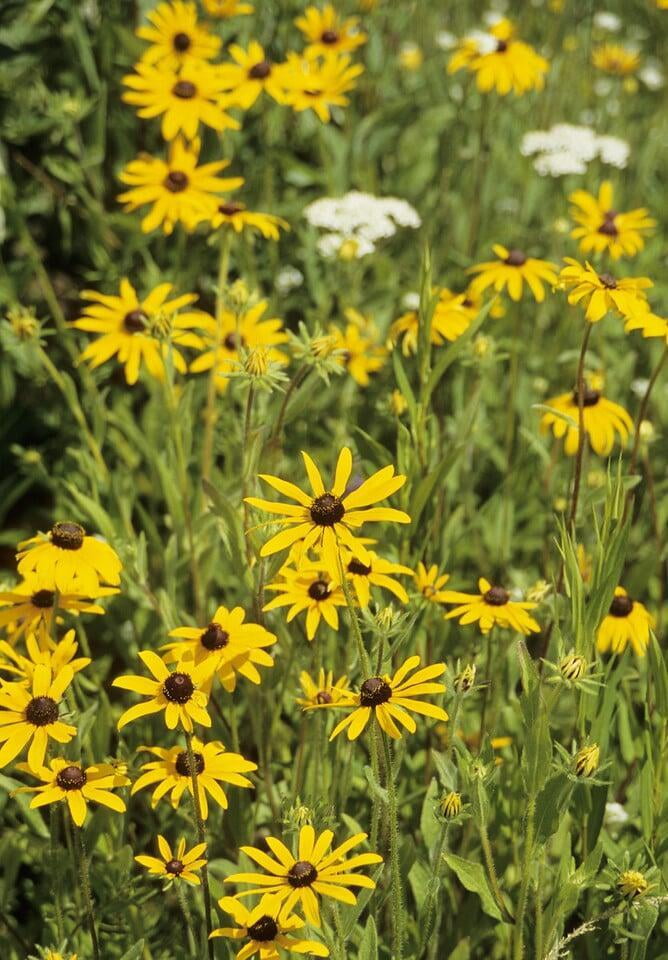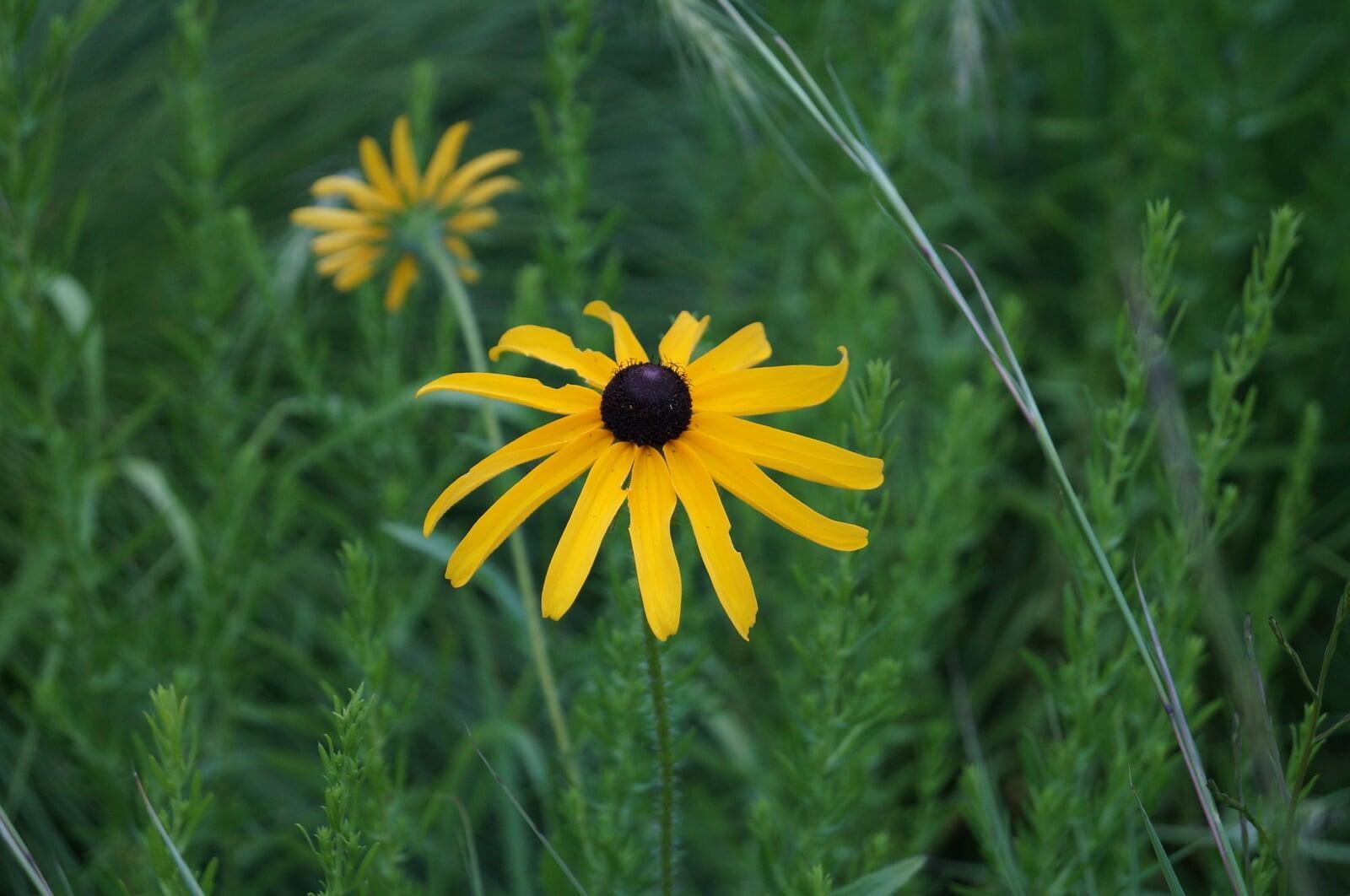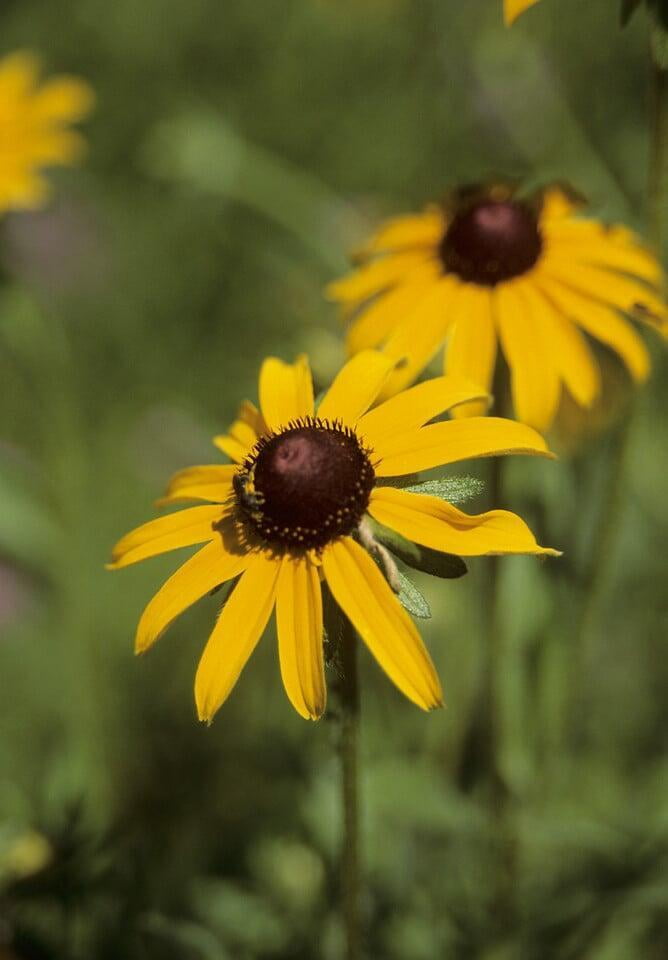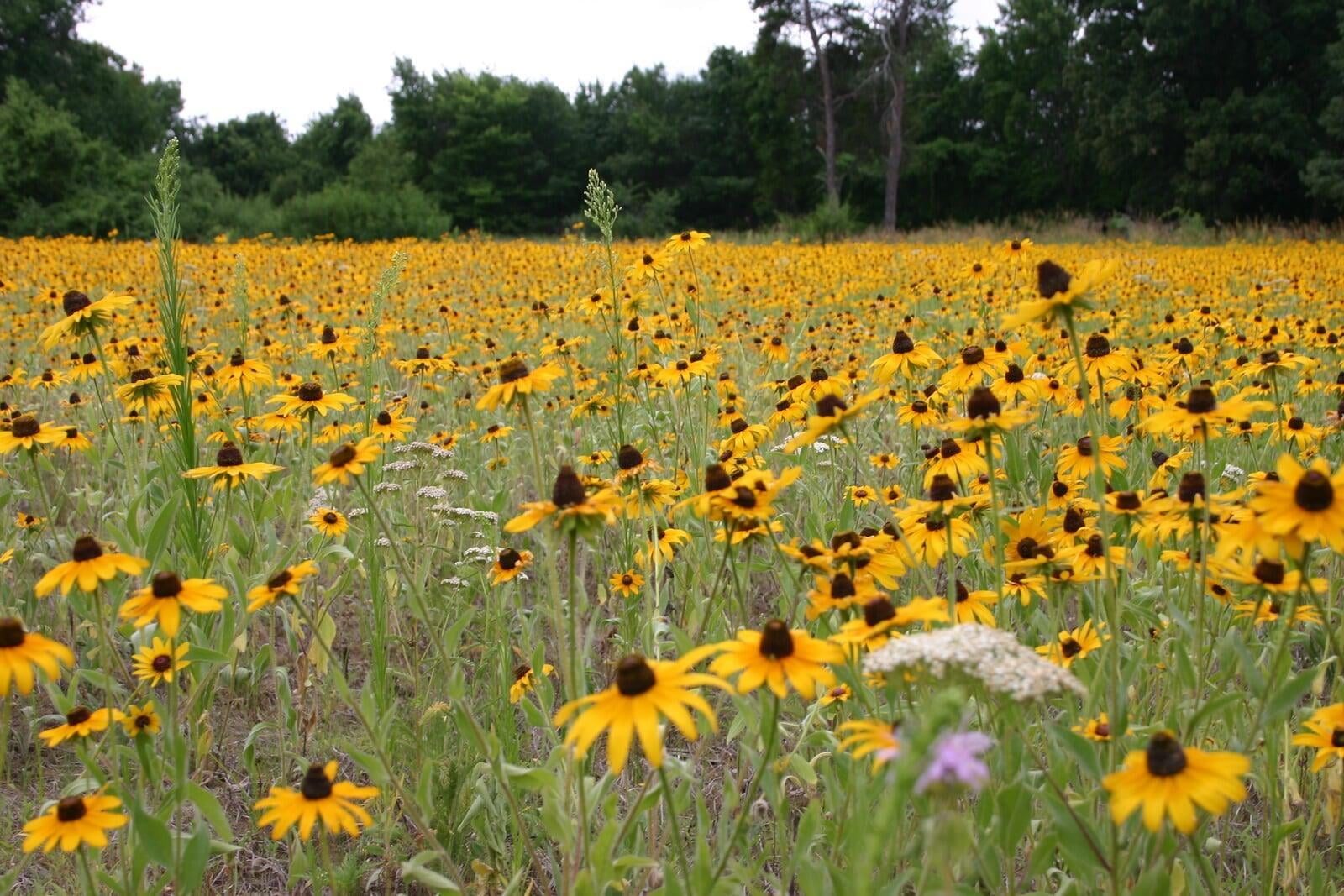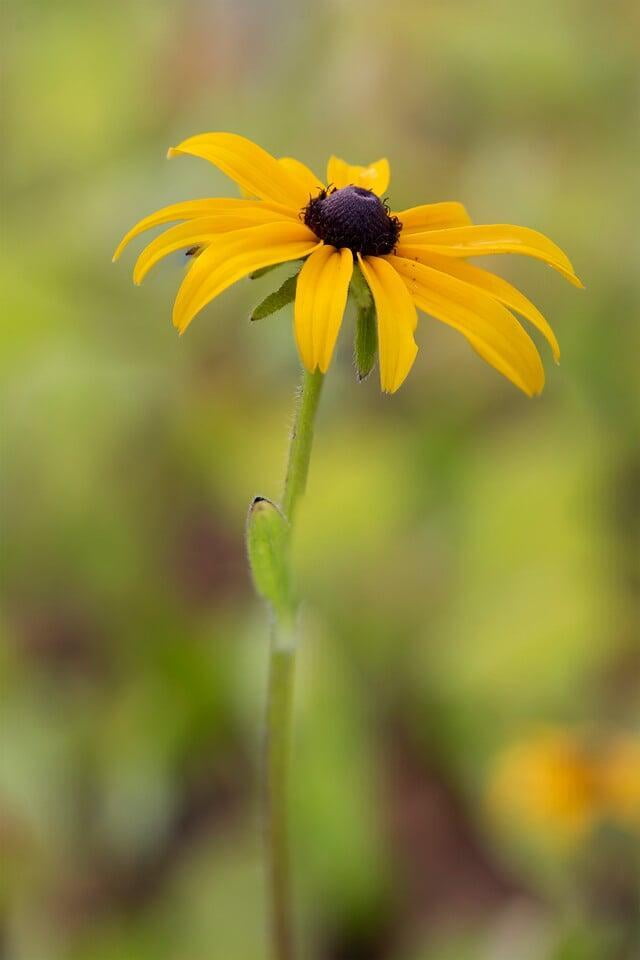Rudbeckia hirta
Black-eyed susan Description:
Rudbeckia hirta, commonly known as Black-Eyed Susan or Coneflower, is a herbaceous perennial plant that is native to North America. It is known for its showy yellow flowers with dark centers that resemble a black eye. The plant produces blooms from midsummer to early fall and can reach up to three feet tall. The foliage of Rudbeckia hirta is hairy and consists of basal leaves that are lance-shaped and toothed, and stem leaves that are pinnate. Rudbeckia hirta is a popular garden plant due to its attractive flowers and drought-tolerant nature. It can be used in a variety of garden settings, from formal beds to wildflower meadows, and is particularly well-suited for naturalized areas.
In the wild, Rudbeckia hirta provides food and habitat for a variety of wildlife, including bees, butterflies, and birds. The flowers are especially attractive to bees, which collect nectar and pollen from the plant. Birds and other animals are also known to forage on the plant's seeds. Overall, Rudbeckia hirta is an important component of many natural landscapes and deserves recognition for its ecological value.
Native Range:
Black-eyed susan is found across most of the continental United States with only portions of the Southwest have no native presence. In Minnesota, Black-eyed susan is present in nearly the entire state.
Standard Plant Information:
Plant Height: 1' - 3'
Bloom Time: June - October
Preferred Habitat: Does well in full sun. Often found in prairies, open woodland, and roadsides,
Sowing:
For most homeowners, the best option is to scatter seed on the ground by hand broadcasting at a minimum of 16-64 pls ounces per acre. For even coverage, we recommend that you broadcast seed in perpendicular rows across the site to ensure even coverage.
You’ll want to broadcast any grass seed first, which will get raked into the soil lightly. Next, it is ideal to mulch the area lightly with either a clean (no seed) straw or preferably with our native Little Bluestem straw, sold at our retail garden centers. After a light mulching is complete, now it’s time to broadcast your native wildflower seeds, which should not be raked into the soil. A good rain or watering is sufficient to cover the seed.
Planting:
Simply dig a hole in the soil slightly larger than the plant’s roots. Ensure that the soil line of the plant is maintained during the transfer (i.e. the plant should be at the same level with the ground as it was in the pot). Pack any loose dirt back around the plant and make sure you water it well the same day to ensure it has the best chance of survival.

